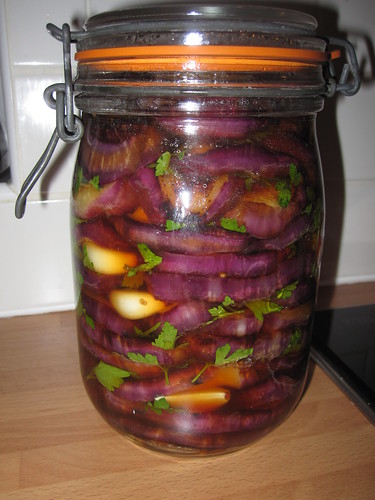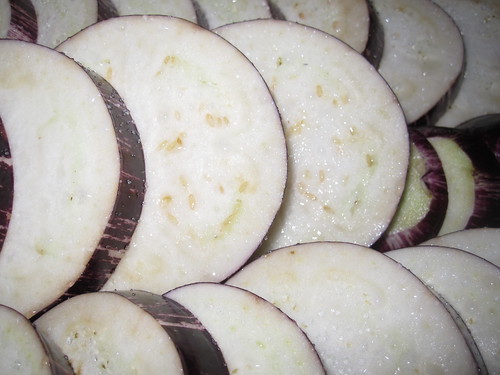Actually the tradition is baklava, however kadayif is filo pastry which has been finely shredded and is done in pretty much the same way - one layer of pastry at the bottom, chopped nuts and cinnamon in the middle and a second layer of pastry on top.
Ingredients
125 g unsalted butter + some for buttering the dish
400 g kadayif pastry
200 g mixed chopped nuts
1 tsp ground cinnamon
800 g granulated sugar
1 litre water
1 tbsp lemon juice
1 dl dried rose petals
zest from one lemon
Method
- Melt the butter on low-medium heat. Butter a large oven-proof and deep dish and pre-heat the oven to 150 °C (not fan!)
- Dampen a piece of baking paper or clean kitchen towel.
- Open the packet of kadayif and divide into two equal parts. Wrap one with the damp paper/towel and spread the other in the baking dish, making sure the pastry is evenly distributed.

- Mix the nuts and the cinnamon well, then sprinkle over the bottom level of the kadayif, making sure it's as even as possible.
 >
>
- Unwrap the second half of the kadayif and spread over the nuts, again pressing down and making sure it's as even as possible.
- Drizzle the melted butter over the kadayif
>
and bake in the oven for about 2 h, until it goes pale golden brown on top. - Remove from the oven and allow to cool down.

- Place the granulated sugar, water, lemon juice, rose petals and lemon zest in a large saucepan and slowly bring to the boil, then let simmer for 20 minutes to form a thick-ish syrup.
- Pour the syrup over the kadayif through a sieve to remove the rose petals and zest, then press down gently so that all the pastry can soak in the syrup.

- Leave to cool down, then cover with cling film and chill for 24 h before serving.
The kadayif pastry I bought had been folded up a couple of times the way it came out from the shredder, so each strand was neatly lined up. Based on vague memories of what my Mum's kadayif used to look like many years ago, and what I personally find quite attractive is that it's all jumbled up in the baking tray. So this is what I did this time and this resulted in the kadayif increasing dramatically in volume, so that I had to swap to a bigger baking dish, and even that one just barely fitted everything in. Don't get fooled if it looks like a small packet.
Another thing to keep in mind is that just like filo pastry, this dries out very quickly, which is why I wrapped it up in a damp sheet of baking paper. It requires some good planning and swift work, so all ingredients should be ready measured up/chopped/melted/whatever, so that the kadayif can be put together as quickly as possible.
I did some brief searching on the web - most basic recipes are a variation of the above. Most seemed to use a lot more butter than I did and less syrup, but I like the kadayif to be sweet and moist. I'd like to try a couple of more rounds and experiment with different ways of shaping. I think trying to make like tubes filled with nuts would be good. Definitely less syrup here though.
I also think a spray contraption for the butter would work better and get the kadayif pastry more evenly "buttered". In fact the recipe on the packet recommended dipping the whole lot in 250 g melted butter, then dividing in two and sprinkling the nuts in the middle. Perhaps also breaking/cutting up the kadayif into shorter lengths might make it easier to work with.
The original recipe I followed only listed walnuts, but I did equal parts walnuts, hazelnuts and pistachios and would have used others as well, if I had any, but since Lundulph developed a sensitivity to nuts, I'm not buying the copious amounts I used to in the past.
This amount was massive, and took a while to get through, since we didn't manage to get the whole clan together this year, so if I try this again, I'll halve everything.

